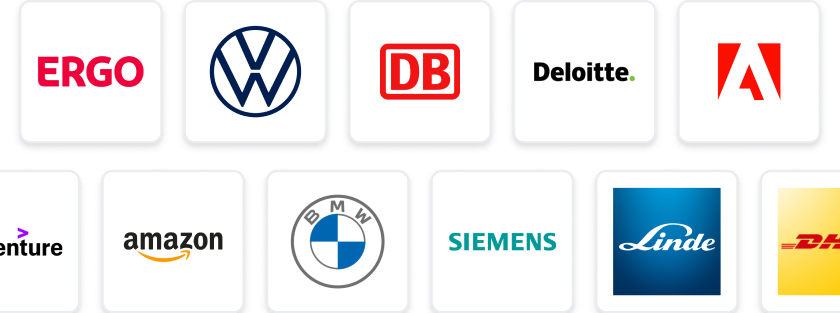At a Glance
- Tasks: Join us in developing cutting-edge embedded software for space telescopes that capture high-res Earth images.
- Company: Super-Sharp Space Systems is revolutionizing Earth-imaging with affordable, high-resolution thermal infrared technology.
- Benefits: Enjoy a collaborative work environment and the chance to contribute to impactful global solutions.
- Why this job: Be part of a mission-driven team tackling climate change and enhancing global security through innovative technology.
- Qualifications: 5+ years in embedded systems, strong C/Python skills, and experience with Cortex MCUs required.
- Other info: Ideal for those passionate about aerospace and making a difference in the world.
The predicted salary is between 48000 - 72000 £ per year.
Super-Sharp Space Systems is an Earth-imaging company developing unfolding space telescopes to capture high-resolution thermal infrared (TIR) images of the earth. Our technology allows us to fit a large telescope in a small box, making low-cost, high-resolution, and frequent Earth-imaging possible. This makes powerful TIR space telescopes much more affordable while achieving 4x greater resolution than the current state-of-the-art solutions. The images captured by our space telescopes can be used for applications such as tackling climate change, crop monitoring, and maintaining global security. We are determined to offer high-quality affordable Earth-imaging solutions to empower our world in responding to global change.
Primary technical requirements
· At least 5 years of experience working with embedded software systems.
· Excellent working knowledge of C and Python.
· Substantial development experience with Cortex MCUs e.g. M7 or M4.
· Experience in developing drivers for internal (e.g. PWM modules) and external MCU peripherals (e.g. H-bridge motor drivers).
· Substantial experience with standard communication protocols e.g. UART, I2C and SPI.
· Familiarity with reading and interpreting hardware schematics and datasheets.
· Substantial experience troubleshooting Firmware/Electronics issues and familiarity with instruments e.g. Oscilloscopes and Logic Analyzers.
· Experience with writing good quality documentation such as Software Requirements and Specifications and API documents.
· Experience working with Version control software e.g. Bitbucket and following best practices e.g. Code reviews and Pull Requests for software development.
Non-technical Skills
· MSC or higher in Electrical & Electronics Engineering, Computer Science, or related course.
· Excellent communication skills.
· Comfortable working in a multi-disciplinary team e.g. Mechanical and Electronics engineers.
Desirables
· Development experience with DC brush and/or Stepper motors and drivers.
· Experience with video codecs, encryption and compression algorithms.
· Development experience with aerospace flight heritage sub-systems.
· Contributed to redundancy and risk management procedures from the software point of view.
· Contributed to Test plan development.
· Exposure to Xilinx and Altera FPGAs.
Embedded Software Engineering employer: SuperSharp
Contact Detail:
SuperSharp Recruiting Team
StudySmarter Expert Advice 🤫
We think this is how you could land Embedded Software Engineering
✨Tip Number 1
Make sure to showcase your experience with embedded software systems prominently. Highlight specific projects where you've worked with Cortex MCUs and the communication protocols mentioned in the job description.
✨Tip Number 2
Demonstrate your problem-solving skills by discussing any troubleshooting experiences you've had with firmware or electronics issues. Mention the tools you used, like oscilloscopes or logic analyzers, to show your hands-on expertise.
✨Tip Number 3
Since collaboration is key, be prepared to discuss your experience working in multi-disciplinary teams. Share examples of how you've effectively communicated with mechanical and electronics engineers to achieve project goals.
✨Tip Number 4
If you have experience with documentation, emphasize your ability to write clear Software Requirements and Specifications. This will demonstrate your attention to detail and understanding of best practices in software development.
We think you need these skills to ace Embedded Software Engineering
Some tips for your application 🫡
Tailor Your CV: Make sure your CV highlights your experience with embedded software systems, particularly your proficiency in C and Python. Include specific projects where you've worked with Cortex MCUs and communication protocols like UART, I2C, and SPI.
Craft a Strong Cover Letter: In your cover letter, express your passion for Earth-imaging technology and how your skills align with the company's mission. Mention your experience troubleshooting firmware issues and working in multi-disciplinary teams, as these are key aspects of the role.
Showcase Relevant Projects: Include examples of past projects that demonstrate your ability to develop drivers for MCU peripherals and your familiarity with hardware schematics. Highlight any experience you have with documentation, such as Software Requirements and Specifications.
Highlight Communication Skills: Since excellent communication skills are essential for this role, provide examples of how you've effectively collaborated with mechanical and electronics engineers in previous positions. This will show that you're a good fit for their multi-disciplinary team.
How to prepare for a job interview at SuperSharp
✨Showcase Your Technical Expertise
Be prepared to discuss your experience with embedded software systems in detail. Highlight specific projects where you utilized C and Python, and be ready to explain your work with Cortex MCUs and communication protocols like UART, I2C, and SPI.
✨Demonstrate Problem-Solving Skills
Expect questions about troubleshooting firmware and electronics issues. Share examples of challenges you've faced and how you used tools like oscilloscopes and logic analyzers to resolve them.
✨Communicate Effectively
Since excellent communication skills are a must, practice explaining complex technical concepts in simple terms. Be ready to discuss how you collaborate with multi-disciplinary teams, including mechanical and electronics engineers.
✨Prepare for Documentation Questions
Be ready to talk about your experience writing documentation such as Software Requirements and Specifications. Discuss the importance of good documentation practices and how they contribute to successful software development.
